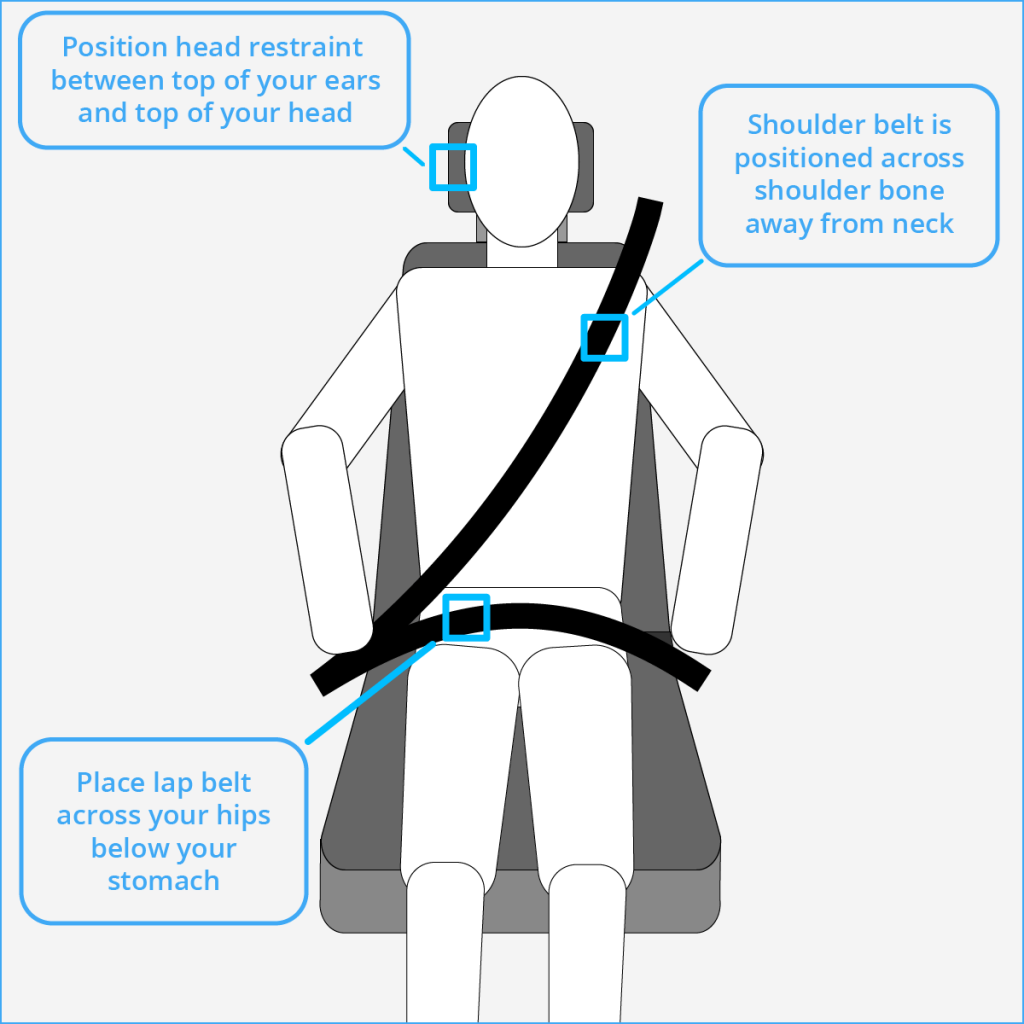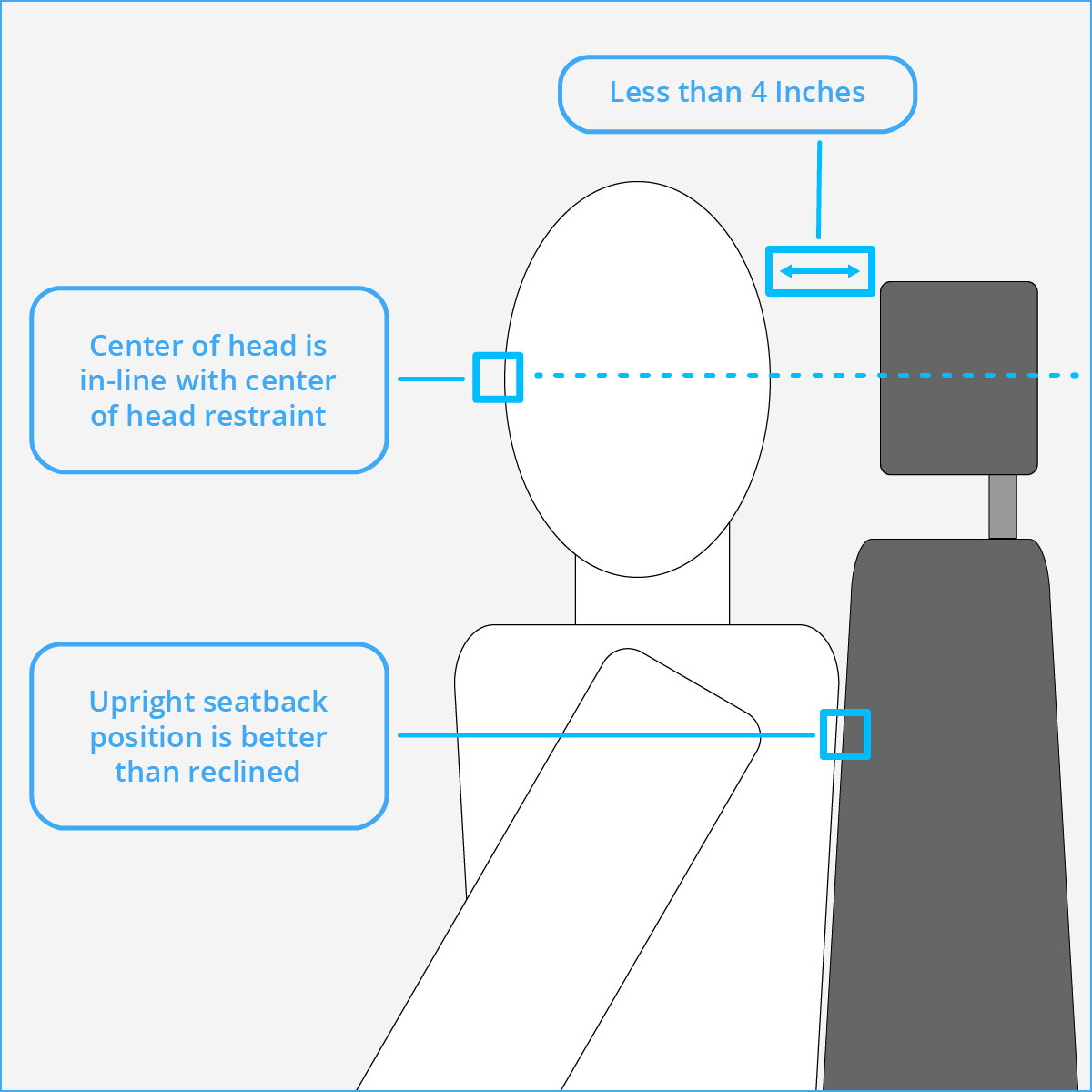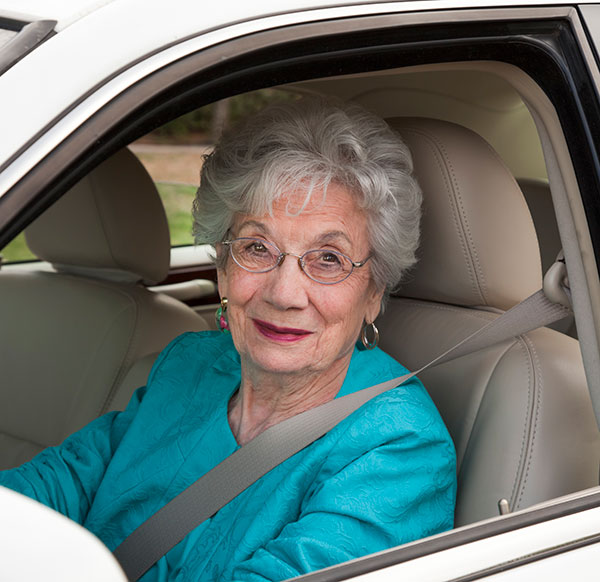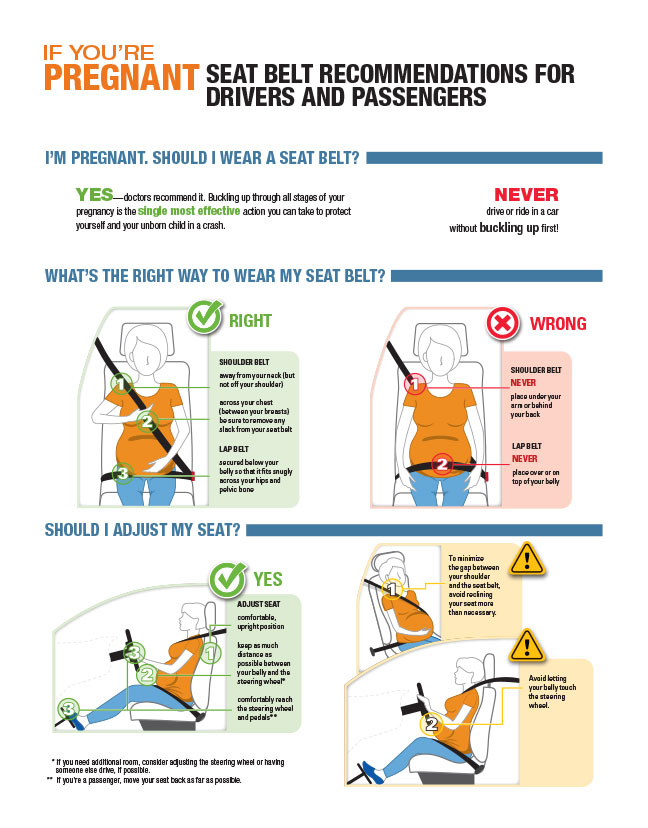Adults
It’s a fact, seat belts save lives. Did you know that 90 percent of Utahns wear their seat belts? See the latest Seat Belt Survey information. Seat belts are the single most effective traffic safety device for preventing death and injury, unfortunately some people still don’t buckle up. We all have a responsibility to get those we love to buckle up. Set the example, always wear your seat belt and remind others to do the same.
In 2013, unbuckled crash occupants were 34 times more likely to die in a crash than restrained occupants. An estimated 72 lives were saved because of restraint use and an estimated 37 additional lives would have been saved if everyone had been wearing seat belts.
- Wearing a seat belt also helps the driver stay in the driver seat and helps maintain control of the vehicle.
- In a crash, unbuckled passengers can become a projectile and increase the risk of hurting or killing others in the car by 40 percent.
- Three out of four people who are ejected during a crash die from their injuries.
- When the driver is unbuckled, 76 percent of children also ride unbuckled. When the driver is belted, 87 percent of children also ride with a seat belt. Be an example and buckle up.
The Top Five Things to Know about Buckling Up:
Buckling up is the single most effective thing you can do to protect yourself in a crash.
Seat belts save approximately 15,000 lives each year. While most people wear their seat belts, nearly half of people who die in crashes are not belted. (IIHS)
If you are completely thrown from a vehicle during a crash, it is almost always fatal. If you do survive, it’s gonna hurt. Buckling up keeps you safe and secure inside your vehicle and can save your life—and your face. Seat belts are the best defense against impaired, aggressive, drowsy and distracted drivers.

Know how to buckle up properly.
The lap belt and shoulder belt are secured across the hip bones, across the chest and positioned at mid shoulder; these bones are more equipped to withstand crash forces than other parts of your body. Wearing BOTH your lap and shoulder belt is the best line of defense.
- The head restraint should lie somewhere between the top of your ears and the top of your head.
- Place the shoulder belt across your shoulder bone, down the middle of your chest and away from your neck.
- Adjust the lap belt across your hips below your stomach.
NEVER put the shoulder belt behind your back or under your arm.
Airbags are designed to work with seat belts, not replace them.
Did you know that airbags open at a rate of 100-200 mph? If you are thrown directly into a rapidly opening airbag without any restraining help from your seat belt, the force could injure or even kill you. Seat belts are designed to work together with airbags—the seat belt secures the occupant and the airbag lessens the crash impact. Visit www.iihs.org for more information on airbag safety.
Tips:
- Always keep at least 10 inches between the center of your chest and the steering wheel cover or dashboard.
- Drivers and front passengers should sit in the center of the seat upright against the seatback with feet on the floor.
- Children under age 13 should ride properly restrained in the back seat, as the back seat is the safest for children. If you have an airbag ON-OFF switch, check its position every time you enter your vehicle.
- One survey shows that 48 percent of these ON-OFF switches were incorrectly left ON for child passengers under age 13. For information on airbag safety, visit the IIHS.org website.
- Passengers, including children shouldn’t lean against the vehicle door or window. With or without an airbag, passengers who lean against doors are at higher risk of injury in the event of a side impact crash.
Occupant protection is for everyone.

Click it, Utah. Every one, every trip.
Fit matters.
- Before you buy a new car, check to see that its seat belts are a good fit for you.
- If you’re short, ask your dealer about seat belt adjusters, which can help you get the best fit. Click here for more information.
- If you need a roomier belt, contact your vehicle manufacturer to obtain a seat belt extender. Click here for more information.
- If you drive an older or classic car with no seat belts or lap belts only, check with your vehicle manufacturer about how to update your car with today’s safer lap/shoulder belts.
Air Bag Information
As of 2015, National Highway Traffic Safety Administration (NHTSA) estimates that frontal airbags have saved 44,869. However, these are supplemental safety devices and motorists should always wear a seat belt. In addition, children under 13 should ride properly protected in the back seat, as the back seat is the safest for children. If you have an airbag ON-OFF switch, check its position every time you enter your vehicle. One survey shows that 48 percent of these ON-OFF switches were incorrectly left ON for child passengers under age 13. For information on airbag safety, visit the IIHS.org website.
For more information on how airbags work and the science and innovation behind them, visit the IIHS.org.
Facts
Air bags help seat belts save lives. Check out these facts:
- Front airbags reduce driver fatalities in frontal crashes by 29 percent and fatalities of front-seat passengers age 13 and older by 32 percent (Kahane, 2015)
- Side airbags that protect the head reduce a car driver’s risk of death in driver-side crashes by 37 percent and an SUV driver’s risk by 52 percent (McCartt & Kyrychenko, 2007).
Head Restraints
Like the seat belt, head restraints are a critical part of your vehicle’s safety equipment. Correct positioning of your head restraint can protect you and your passengers from whiplash injuries, a broken neck and death.
- To minimize neck injury, NHTSA suggests placing the head restraint at a height where the center of your head is in-line with the center of the head restraint.
- The distance from the back of the head to the restraint should be as small as possible, preferably less than four inches, according to the Insurance Institute of Highway Safety.
If the head restraint can be horizontally adjusted, it should be placed so that it’s as close to your head as possible, without pushing your head forward or causing the height of the restraint to drop. - The position of your seatback is also important—less is better when it comes to reclining. A more upright seatback means that the head restraint will likely be in a safer position—one that’s closer to your head.

A Pregnant Woman's Guide to Buckling Up
- Always wear your seat belt in a vehicle.
In a crash, a seat belt is the best protection for both you and your unborn child. - Adjust your seat in the car.
You should move the front seat as far back as possible. If you are driving, make sure that you can still comfortably reach the pedals. Always keep at least 10 inches between the center of your chest and the steering wheel cover or dashboard. As your abdomen grows during pregnancy, adjust your seat to maintain this 10-inch minimum. - Adjust your head restraint.
Place the head restraint at a height where the center of your head is in-line with the center of the head restraint. - DON’T turn your airbag off in your vehicle.
Doctors recommend that pregnant women wear seat belts and leave airbags turned on. Seat belts and airbags work together to provide the best protection for you and your unborn child. - Wear your seat belt the right way.
The shoulder belt should lie across your chest and away from your neck. Secure your lap belt below your belly so that it fits snugly across your hips and pelvic bone. - It is important to wear your seat belt properly in all stages of your pregnancy.
- If you are in a crash, contact your doctor.
CREDIT: Information provided by NHTSA
Special Needs
It is important for all drivers and passengers of motor vehicles to be properly buckled on every trip. Unfortunately, using standard seat belts can be cumbersome, or even impossible, for many adults, such as older people, short or little people and those who are overweight. There are many after-market products and “tricks of the trade” that can help adults with special needs to ride safely.
Older Adults
With the older adult population of the United States growing at a rapid pace, traffic safety advocates are concerned with highway safety issues affecting this age group. Older adults are often faced with comfort and convenience issues.
Some of the major factors to non-use of seat belts among this population include:
- Difficulty reaching for the shoulder belt and pulling across the body.
- Shoulder belt cuts across neck; seat belt puts pressure on skin and chest.
- Difficulty inserting latch plate in belt buckle.
- Belt buckle is difficult to locate.
- The release method is confusing.
- Seat belts are uncomfortable or difficult to use due to occupant girth and height.

Did You Know?
Many newer vehicles have seat belt height adjusters. This adjuster allows you to position the shoulder belt across the middle of your shoulder and may alleviate some of the discomforts. Look for this device on the shoulder belt where it attaches to your car.
In addition, problems with comfort and convenience may be exacerbated by the different types of physical limitations experienced by many older adults. Specific physical conditions that may directly influence comfort and seat belt non-use among older adults include: arthritis, shoulder, and neck pain; osteoporosis; kyphosis; increase in fragility due to aging; presence of a pacemaker; recovery from recent surgery; obesity; or small stature. These conditions could lead to misuse and non-use among this population. Despite any challenges you have when using a seat belt, it is very important to buckle up on every ride.
Helpful Tools
There are a variety of non-regulated devices that can help improve the ease of reach, pulling or buckling, or improve the fit of the seat belt. However, before modifying or installing any safety feature in a vehicle, owners should use caution and contact their vehicle manufacturer for recommendations. These devices vary in their design and function and include:
- Seat belt adjuster: Positions the seat belt so it is easier to reach for fastening and so that it is positioned on the shoulder and doesn’t chafe the neck.
- Pivoting seat: Raised disk allows for easy twisting to reach for shoulder belt, raises upper body, and results in better fit for lap and shoulder belt.
- Shoulder belt pad: Provides padding and prevents seat belts from chafing skin and neck.
- Ribbon or plastic loop: Permits easier reach for the seat belt and allows occupant to pull the shoulder belt toward the body without twisting of the body.
Helpful Resources
- The AARP Driver Safety Program helps older drivers protect their safety on today’s roads. AARP has offered its classroom course since 1979, and now offers the course online. Participants can tune up their driving skills and update their knowledge of the rules of the road, learn defensive driving techniques and discover ways to handle left turns, right-of-way questions, highway traffic and blind spots. For more information, visit the AARP website.
- The CarFit program, a 20-minute assessment of older drivers in their motor vehicles, was developed by the American Society on Aging, AAA, AARP and the American Occupational Therapy Association in partnership with occupational therapists and other experts in the field of older driver research. The program uses a checklist that includes a line item on seat belt use. This line item instructs the assessor to check for misuse and ease of seat belt use. Among the material distributed to the older driver is a section under safety procedures that specifically addresses seat belts. For more information, visit the CarFit program website.
- The American Association of Motor Vehicle Administrators (AAMVA) initiated a GrandDriver program that focuses on the basic rules of driving, including the instruction to always use a seat belt as well as descriptions of assistive features in the vehicle including height adjustable seats and seat belt anchors. To receive the brochure, “What You Should Know about Aging and Driving,” call 800-552-3402 or visit https://www.aamva.org/granddriver/.
Short Statured and Little People
Little people and others who are short in stature have to make adjustments in many things they encounter in life. Wearing a seat belt and operating a motor vehicle is certainly one of the challenges they will encounter. The inability to reach the pedals, sitting too close to the steering wheel and the improper fit of the vehicle seat belt can make it nearly impossible to operate a vehicle safely without first adapting it to accommodate their unique needs.
Helpful Tools
There are a variety of aftermarket devices that can help improve the ease of reach, pulling or buckling, or improve the fit of the seat belt. However, before modifying or installing any safety feature in a vehicle, owners should use caution and contact their vehicle manufacturer for recommendations. These devices vary in their design and function and include:
- Seat belt adjuster: Positions the seat belt so it is easier to reach for fastening and so that it is positioned on the shoulder and doesn’t chafe the neck
- Shoulder belt pad: Provides padding and prevents seat belts from chafing skin and neck
- Seat cushion: Raises the upper body for a better fit for the belt across the shoulder and hips
- Pedal extender: Used by drivers who are unable to reach the gas and brake pedals or who are sitting too close to the steering wheel.
Overweight Individuals
Current federal motor vehicle standards specify that the length of seat belts is required to accommodate a 215-pound man who has a seated hip circumference of 47 inches. Government regulations for auto manufacturers don’t use BMI to determine dimensions for seat belts. To help accommodate larger motorists, some vehicle manufacturers offer bigger belts or extenders, but other auto companies have concerns about effectiveness and liability.
Helpful Tools
There are a variety of aftermarket devices that can help improve the ease of reach, pulling or buckling, or improve the fit of the seat belt. However, before modifying or installing any safety feature in a vehicle, owners should use caution and contact their vehicle manufacturer for recommendations. These devices vary in their design and function and include:
- Seat belt extender: Extends the buckle so that it is easier to fasten the seat belt. Note that extensions must be used carefully because they can be hazardous if used by passengers who are too small. An incorrectly sized seat belt extender could fail to provide upper body restraint and may pull the lap belt onto the abdomen during a frontal crash, possibly leading to internal injury.
- Seat belt adjuster: Positions the seat belt so it is easier to reach for fastening and so that it is positioned on the shoulder and doesn’t chafe the neck.



